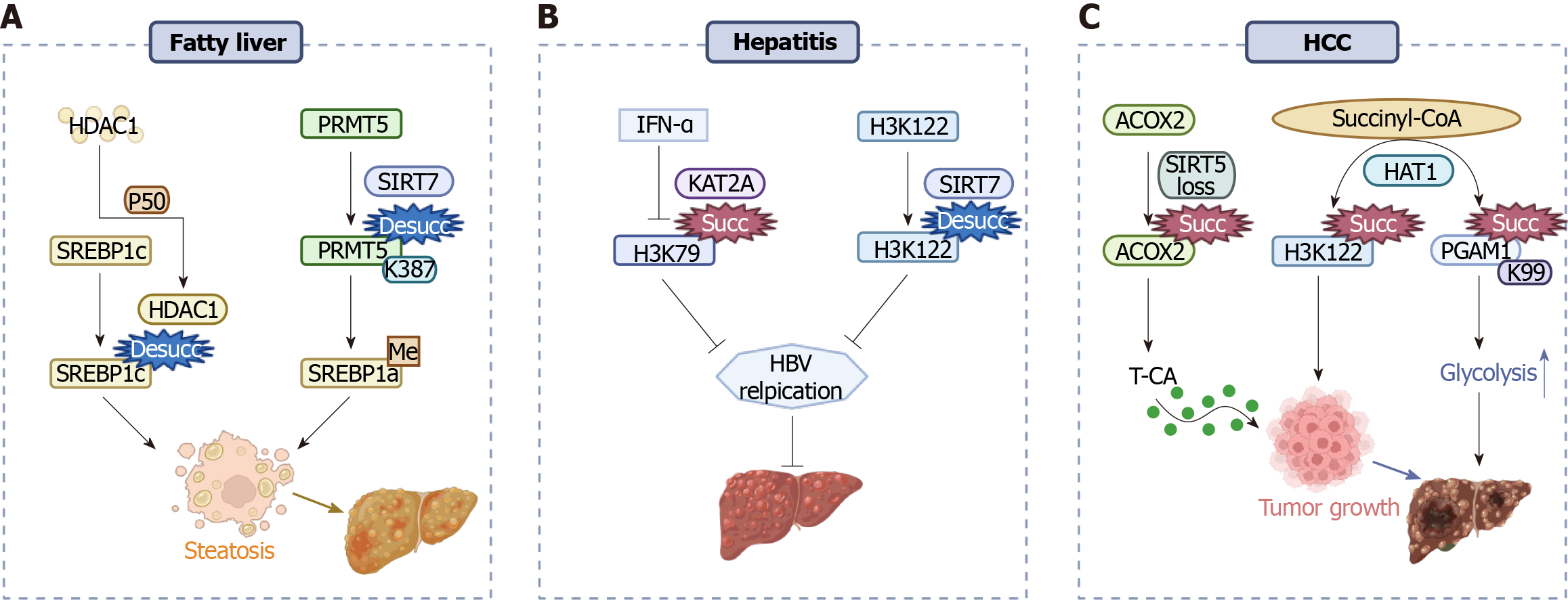Copyright
©The Author(s) 2024.
World J Hepatol. Mar 27, 2024; 16(3): 344-352
Published online Mar 27, 2024. doi: 10.4254/wjh.v16.i3.344
Published online Mar 27, 2024. doi: 10.4254/wjh.v16.i3.344
Figure 3 Succinylation affects the progression of fatty liver, hepatitis, and hepatocellular carcinoma.
A: P50 stabilizes histone deacetylase 1 protein to keep desuccinylation of sterol-regulatory element binding protein 1c, thereby promoting fatty liver. Sirtuin 7 (SIRT7)-mediated desuccinylation of SIRT7 mediates the desuccinylation of arginine methyltransferase 5 at K387 promotes fatty liver by inducing arginine methylation of SREBP1a; B: IFN-α inhibits lysine acetyltransferase 2A-mediated succinylation of histone H3K79 and SIRT7 promotes desuccinylation of histone H3K122, which restrains viral replication and hepatitis; C: Sirtuin 5 deficiency activates acyl-CoA oxidase 2 succinylation, leading to elevated bile acid levels and promoting hepatocellular carcinoma (HCC). Histone acetyltransferase 1 not only promotes hepatocellular carcinogenesis by activating H3K122 succinylation but also promotes the glycolytic pathway by promoting succinylation of phosphoglycerate mutase 1 at K99, thereby promoting HCC. HBV: Hepatitis B virus; PRMT5: SIRT7 mediates the desuccinylation of arginine methyltransferase 5; SREBP: Sterol-regulatory element binding protein; ACOX2: Acyl-CoA oxidase 2; HAT1: Histone acetyltransferase 1; HCC: Hepatocellular carcinoma; PGAM1: Phosphoglycerate mutase 1.
- Citation: Liu S, Li R, Sun YW, Lin H, Li HF. Protein succinylation, hepatic metabolism, and liver diseases. World J Hepatol 2024; 16(3): 344-352
- URL: https://www.wjgnet.com/1948-5182/full/v16/i3/344.htm
- DOI: https://dx.doi.org/10.4254/wjh.v16.i3.344









